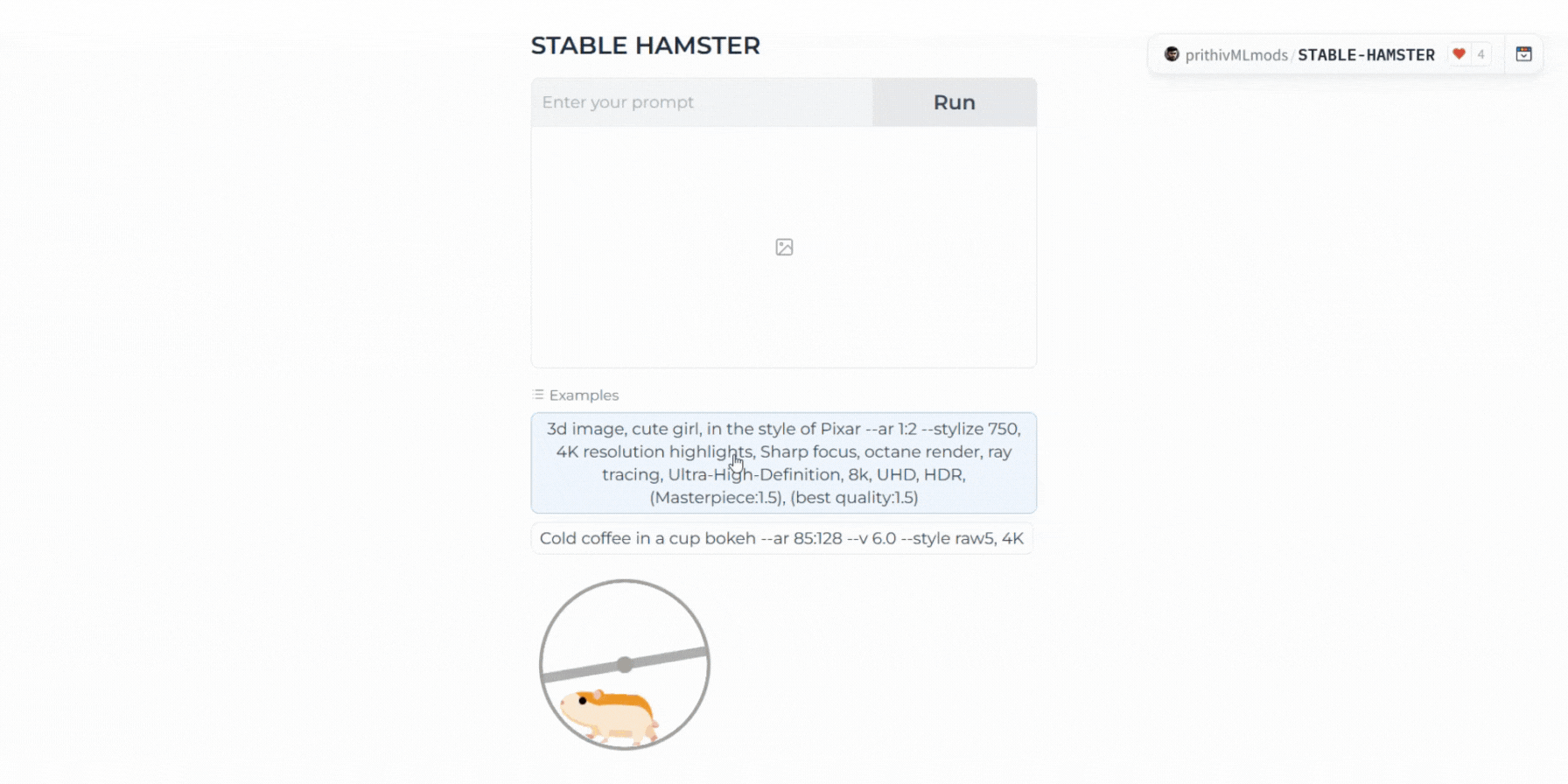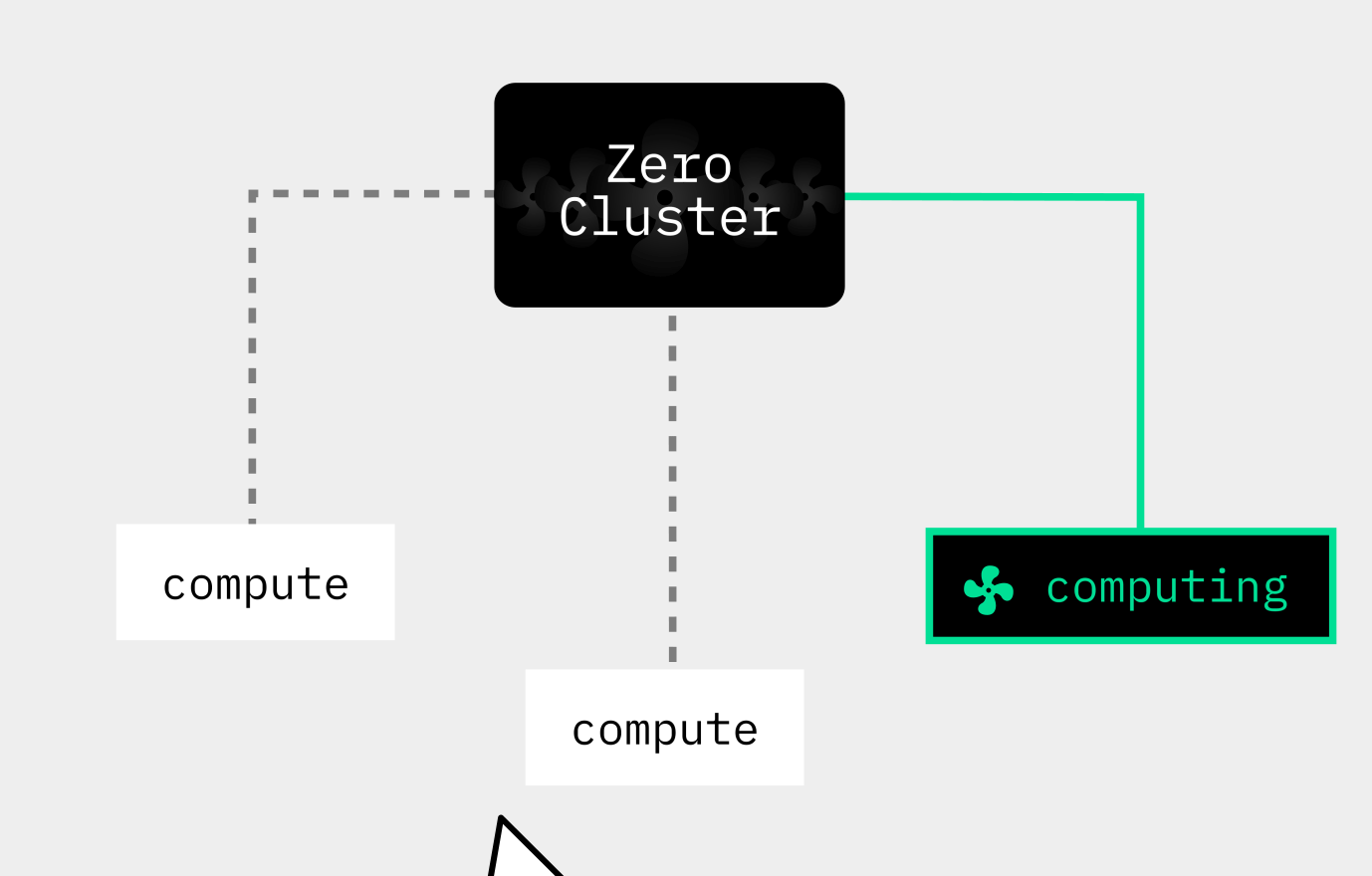| title | emoji | colorFrom | colorTo | sdk | sdk_version | app_file | base_model | model | type | pinned | header | theme | get_hamster_from | license | short_description |
|---|---|---|---|---|---|---|---|---|---|---|---|---|---|---|---|
STABLE HAMSTER |
🐹 |
blue |
pink |
gradio |
4.36.1 |
app.py |
stabilityai/sdxl-turbo |
any |
base_model, model |
true |
mini |
bethecloud/storj_theme |
creativeml-openrail-m |
Fast as Hamster | Stable Hamster | Stable Diffusion |
Check out the configuration reference at https://huggingface.co/docs/hub/spaces-config-reference
Check out the configuration reference at https://huggingface.co/docs/hub/spaces-config-reference
Spaces: https://huggingface.co/spaces/prithivMLmods/STABLE-HAMSTER
Take Clone :
# Make sure you have git-lfs installed (https://git-lfs.com)
git lfs install
git clone https://huggingface.co/spaces/prithivMLmods/STABLE-HAMSTER
# If you want to clone without large files - just their pointers
GIT_LFS_SKIP_SMUDGE=1 git clone https://huggingface.co/spaces/prithivMLmods/STABLE-HAMSTER
 |
 |
|---|---|
 |
 |
| Library | Library | Library |
|---|---|---|
diffusers |
pipeline |
sentencepiece |
torch |
transformers |
spaces |
gdown |
accelerate |
peft |
torchvision |
safetensors |
gradio |
pillow |
ZeroGPU Spaces should mostly be compatible with any PyTorch-based GPU Space. Compatibility with high level HF libraries like transformers or diffusers is slightly more guaranteed That said, ZeroGPU Spaces are not as broadly compatible as classical GPU Spaces and you might still encounter unexpected bugs
Also, for now, ZeroGPU Spaces only works with the Gradio SDK
Supported versions:
Gradio: 4+
PyTorch: All versions from 2.0.0 to 2.2.0
Python: 3.10.13
In order to make your Space work with ZeroGPU you need to decorate the Python functions that actually require a GPU with @spaces.GPU During the time when a decorated function is invoked, the Space will be attributed a GPU, and it will release it upon completion of the function. Here is a practical example :
+import spaces
from diffusers import DiffusionPipeline
pipe = DiffusionPipeline.from_pretrained(...)
pipe.to('cuda')
+@spaces.GPU
def generate(prompt):
return pipe(prompt).images
gr.Interface(
fn=generate,
inputs=gr.Text(),
outputs=gr.Gallery(),
).launch()
We first import spaces (importing it first might prevent some issues but is not mandatory) Then we decorate the generate function by adding a @spaces.GPU line before its definition
If you expect your GPU function to take more than 60s then you need to specify a duration param in the decorator like:
@spaces.GPU(duration=120)
def generate(prompt):
return pipe(prompt).images
It will set the maximum duration of your function call to 120s.
You can also specify a duration if you know that your function will take far less than the 60s default.
The lower the duration, the higher priority your Space visitors will have in the queue
.
.
.


